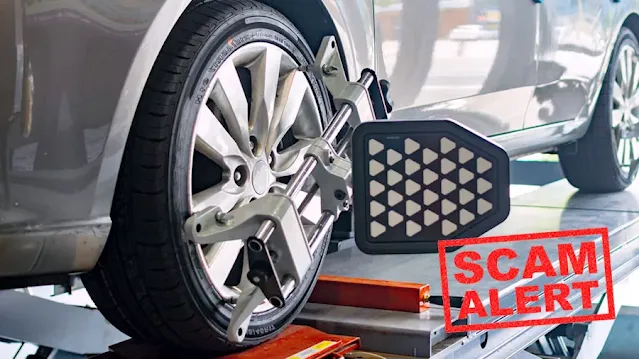For many vehicle owners, finding the right place to buy new tires is about striking a balance between quality, price, and service. As a car owner myself, I remember the first time I needed to replace the tires on my Jeep Wrangler. I spent hours researching options, comparing prices, and reading reviews to ensure I got the best value without compromising safety. Costco, known for its bulk goods and members-only model, has long been a go-to for tire purchases due to its competitive pricing and added benefits. But with rising tire prices and increasing competition, is Costco still the bargain hunter's best bet in 2025? This article explores Costco’s tire offerings, addressing key questions about pricing, rewards, quality, and more to help you decide.
Table of Contents
Costco's Pricing Model
Costco leverages its massive buying power to offer competitive tire prices, often undercutting traditional retailers. By negotiating bulk deals with manufacturers like Michelin and Bridgestone, Costco secures lower costs, which it passes on to members. The company frequently provides instant rebates, such as $60 off a set of four Michelin tires or $30 off BFGoodrich tires, valid during promotional periods like May 14 to June 8, 2025. These savings, combined with free installation, make Costco appealing for budget-conscious shoppers. Additionally, Costco Anywhere Visa® Card holders and Executive members can earn a 2% reward on tire purchases, further enhancing value. Check the Costco Tires Rewards Calculator to estimate potential savings.
Selection and Brands
Costco offers a curated selection of high-quality tire brands, including Michelin, Bridgestone, and BFGoodrich, which are recognized for their durability and performance. While the selection may not match the variety of specialty retailers like Tire Rack, it covers most mainstream vehicles, from sedans to trucks. Costco’s tire search tool on their website allows you to find tires by vehicle make, model, or size, ensuring compatibility. This focus on trusted brands ensures reliability, though those seeking niche or high-performance tires may need to look elsewhere.
Services Included with Purchase
One of Costco’s strongest selling points is its comprehensive tire services. Tire purchases include free installation, lifetime maintenance (balancing, rotation, and flat repairs), and a five-year road hazard warranty that covers damage from potholes or punctures, provided regular maintenance is followed. Costco also uses nitrogen inflation, which retains tire pressure better than compressed air, potentially improving fuel economy and tire lifespan. According to Popular Mechanics, nitrogen’s benefits are modest but measurable. Additional costs, such as TPMS service packs, may apply and typically cost around $19 per tire when required.
Installation and Convenience
Costco’s tire installation process is efficient but can be hampered by long wait times, especially during peak seasons. Appointments can be scheduled via CostcoTireAppointments.com, but availability may be limited, with some customers reporting waits of 2-4 hours. However, the ability to shop for groceries or other items at Costco during installation adds convenience. With tire centers in nearly every state, Costco’s nationwide presence ensures members can access warranty and maintenance services while traveling, a perk not always available at smaller retailers.
Customer Satisfaction and Support
Customer feedback on Costco’s tire centers is generally positive, with many praising the transparent pricing and robust warranty. A Reddit user on r/Costco noted saving $150 on Michelin tires compared to other retailers, highlighting the value of promotions. However, some reviews mention inconsistent service, such as long waits or issues with tire pressure sensor programming. Costco’s customer service and return policies are well-regarded, offering peace of mind for addressing issues.
Competition and Alternatives
Costco faces competition from retailers like Walmart, Sam’s Club, and Discount Tire, which may offer lower base prices or broader selections. Online retailers like Tire Rack provide extensive options and home delivery, though installation costs can add up. While Costco’s free installation and maintenance are compelling, competitors like Discount Tire offer price matching and similar maintenance packages, making comparison shopping essential.
Frequently Asked Questions
How much does Costco charge to install 4 tires?
Costco includes tire installation at no additional charge with the purchase of tires. However, additional costs for components like TPMS service packs may apply, typically around $19 per tire for installation-related fees when applicable.
What is the Costco reward on tires?
Costco offers promotional discounts on select tire brands, such as $40-$60 off Michelin tires or $30 off BFGoodrich tires for sets of four, valid during specific periods (e.g., May 14, 2025 - June 8, 2025). Executive members also earn a 2% reward on tire purchases with the Costco Anywhere Visa® Card by Citi.
Are Michelin tires at Costco the same quality?
Yes, Michelin tires at Costco are the same quality as those sold at other retailers. Michelin maintains consistent safety, durability, and performance standards across all authorized retailers, ensuring no compromise in quality.
Does Costco match prices on tires?
Costco does not typically offer price matching for tires, as their pricing strategy relies on bulk purchasing and exclusive member discounts. However, their competitive pricing and included services often make price matching unnecessary.
What are the perks of buying tires at Costco?
Perks include free installation, lifetime maintenance (balancing, rotation, flat repairs), a five-year road hazard warranty, nitrogen inflation for better pressure retention, and competitive pricing on brands like Michelin and Bridgestone. Members also benefit from promotional discounts and the convenience of nationwide service locations.
Will Discount Tire match Costco’s free installation?
Discount Tire may offer price matching on tires if you provide proof of a lower price, but they typically charge for installation, unlike Costco’s free installation. Their Life of Tire Maintenance includes free rotation and balancing, but installation fees vary by location.
In 2025, Costco remains a strong contender for bargain hunters seeking new tires. Its competitive pricing, free installation, lifetime maintenance, and five-year road hazard warranty make it a compelling choice for mainstream vehicle owners. While competitors like Walmart, Sam’s Club, and Discount Tire may offer lower prices or broader selections, Costco’s bundled services and member-exclusive perks often provide superior value. However, long wait times and limited brand variety may deter some shoppers. For those prioritizing convenience and quality within a budget, Costco is still a top pick, but comparing prices and services at other tire retailers is wise to ensure the best deal.













